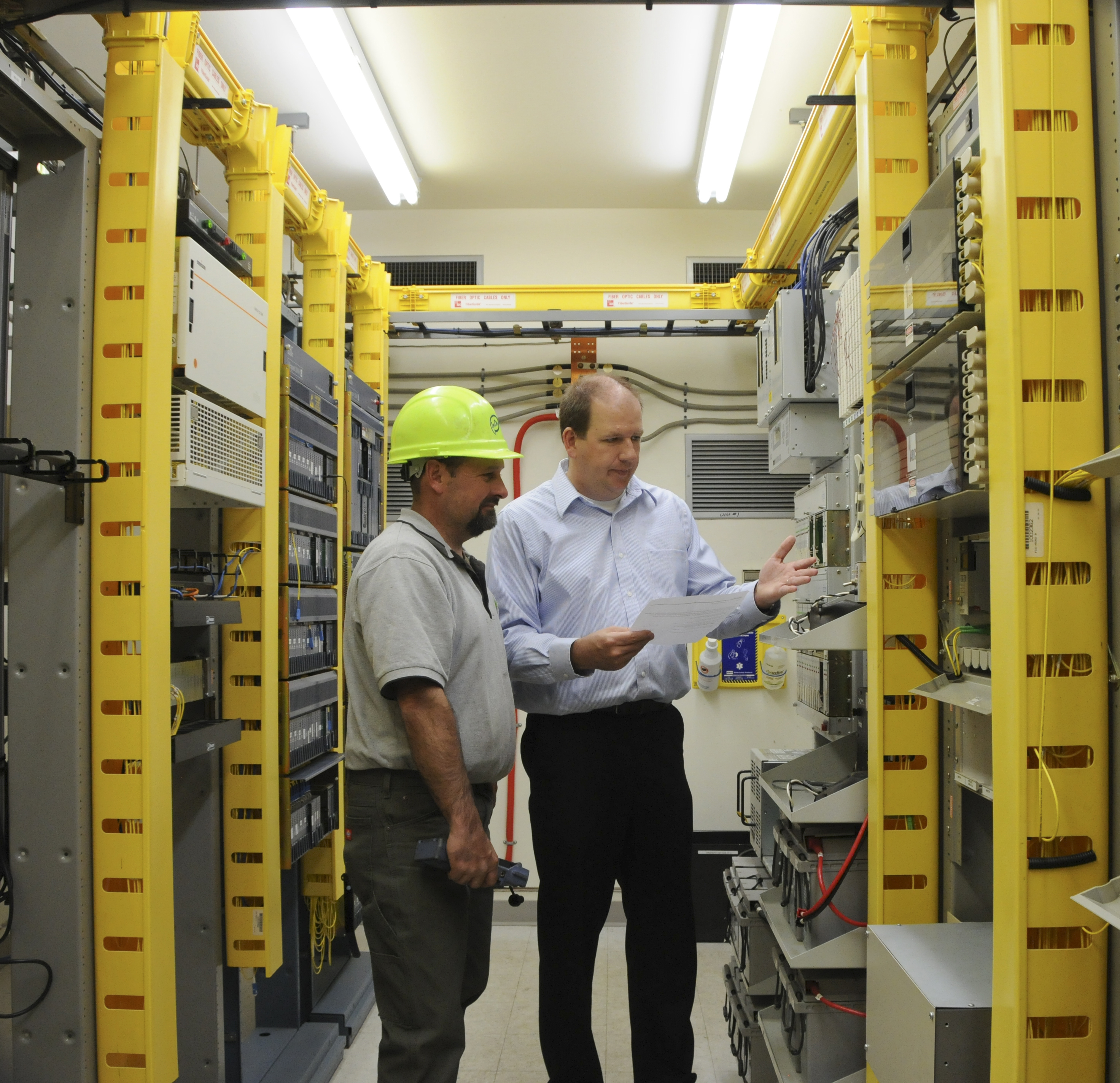
Jeff Janssen (right), vice president of sales and marketing for ImOn, and Brad Olson, a construction technician with ImOn, in a communications hub in Marion. PHOTO/IMON
Over the course of nearly 10 years with ImOn, Jeff Janssen said the biggest shift in the company’s focus has been clear: increased emphasis on high-speed internet, largely due to falling demand for cable television and the proliferation of streaming services like Netflix and Hulu.
“We used to lead with cable TV and start our discussion there,” said Mr. Janssen, vice president of sales and marketing with ImOn. “Now, it’s almost always starting with the internet.”
According to the Leichtman Reseearch Group, the same shift in consumer demand seen at ImOn is happening throughout the nation. The New Hampshire-based research firm, said the country’s top pay-TV providers in the last two years lost about a half-million subscribers. During that same time frame, the top broadband internet providers added more than six million customers.
“[T]he bottom line for the pay-TV industry in the U.S. is that the market is saturated and in a slow decline,” the group wrote in a first quarter 2016 research note. “With the broadband subscriber base increasing, a challenge going forward is how it will also continue to grow. Bringing broadband to later-adopters … and underserved populations is extremely important for providers and policy-makers alike.”
In addition to more customers seeking internet, they’re also seeking it at higher levels. Whereas customers once only used it on a dedicated computer, many homes now rely on the internet for functions like watching movies, playing games, listening to music and even video chatting. Enter gigabit internet, which under optimum circumstances, can be close to 80 times faster than the average U.S. high-speed internet connection of about 12 megabits per second.
In April 2015, ImOn rolled out one gigabit internet service to select customers in Cedar Rapids, Marion and Hiawatha, which was a significant mile marker in the race to keep up with consumers’ demand for bandwidth.
“That growth has just been exponential over the last nine years, and that’s certainly the biggest change,” Mr. Janssen said.
As the company expands its fiber optic network and makes inroads with emerging markets, ImOn also has experienced a recent upswing in business-to-business services.
“Our strategy right now is to go with business,” Mr. Janssen said. “That’s where the highest demand has been and [it’s] a good place to start. Certainly, we will look at expanding our service offerings in Iowa City as soon as we are able to be successful with business.”
Mr. Janssen said that newly constructed businesses using ImOn as their ISP are connected to the ISP’s fiber-optic network, as opposed to the coaxial cable networks that share their connection with cable TV wiring. Most of ImOn’s fiber internet network also is more reliable than cable internet connections, which are more prone to outages than their fiber counterparts.
“It’s a more reliable connection, and it’s redundant, so if it’s cut somewhere in the city, [the connection] automatically reroutes,” Mr. Janssen noted.
Regardless of whether fiber cables are utilized by residential or business customers, Mr. Janssen said the company’s infrastructure investment is a response to customers’ evolving media preferences and long-term habits.
“We know that cable TV’s future is kind of up in the air with all the ‘over the top’ content out right now, and it’s not something we want to fight,” he said. “All those devices will require an internet connection, and that’s what we’re focused on.”
– Chase Castle
TIMES ON LIST:
6 Times on Best of list




